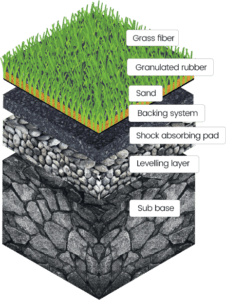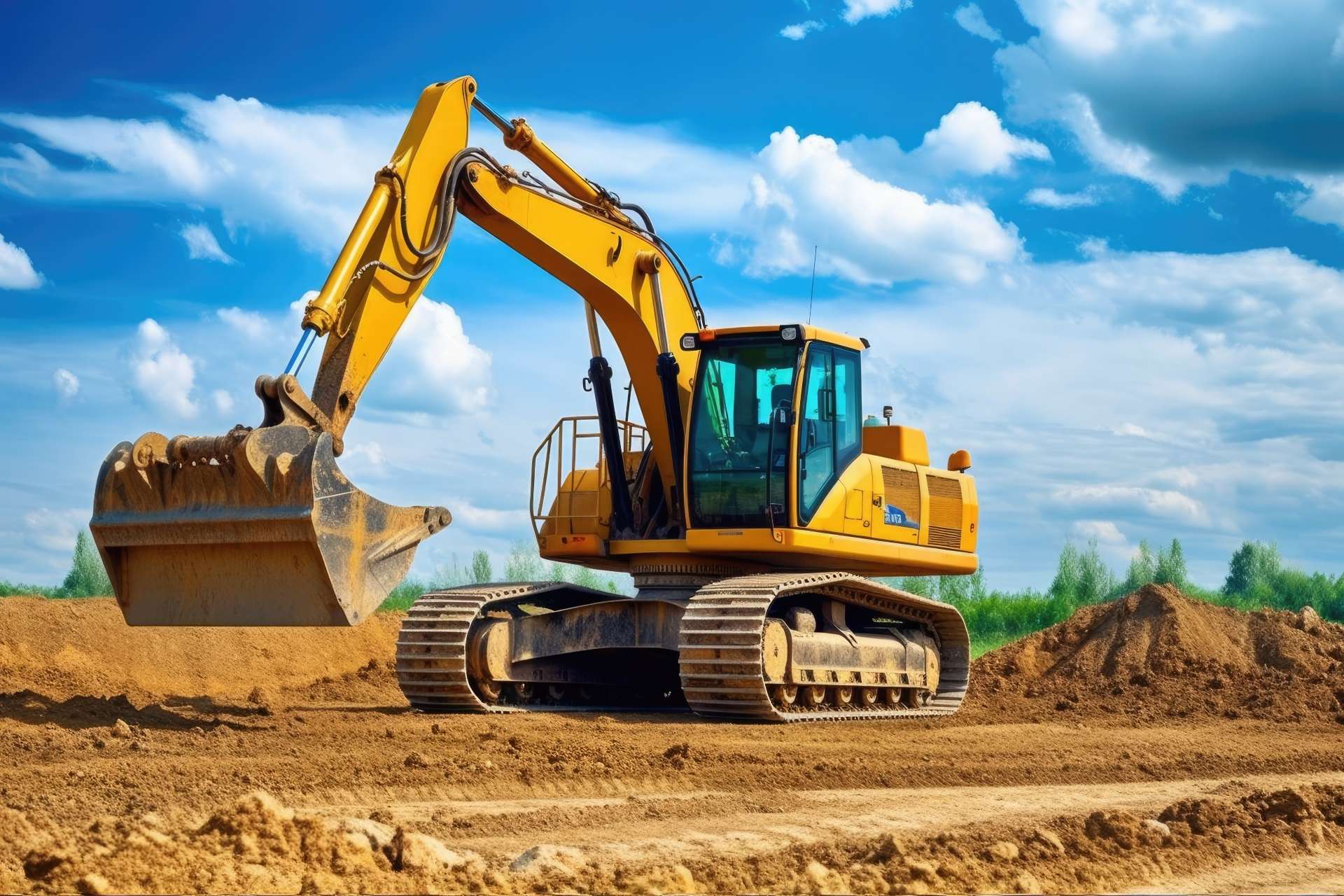The most important part of building an artificial grass field is the field design. The field layers beneath the artificial grass surface, when constructed properly, it will provide the safety, drainage, and support that your field needs to meet the play characteristics required. This guide provides a detailed insight into the various stages and considerations when building a field.
Before construction
Before the first shovel touches the ground, a thorough ground inspection is essential. This step includes:
- Conduct a topographic survey to estimate soil removal needed for a stable sub-base.
- Test ground stability and permeability for sufficient drainage.
- Inspect existing water-collection systems and identify suitable drainage points.
- Assess the site for historical issues and obstructions like flooding, cables, pipes, or foundations that could impact construction.
Synthetic turf field construction
The sub-base is the strength of your artificial turf field. It is a complex system that ensures safety, drainage and stability. According to FIFA guidelines, the sub-base should have a maximum tolerance of +/- 6 mm under a 3-meter straight edge. It should drain and be designed to maintain these properties over time.
The construction process is divided into several phases according to base layers:
 Excavation: removing the top layer to expose the subsoil and prevent the growth of weeds.
Excavation: removing the top layer to expose the subsoil and prevent the growth of weeds.
Drainage installation: An important component that ensures water flows efficiently through the field. In areas with heavy rainfall, an effective drainage system is key.
Sub-base layer: This layer supports the rest of the installation and ensures permeability and stability.
Levelling and compaction: Ensuring a solid and even base, which is crucial for a uniform playing surface. Options include porous asphalt or graded aggregate material.
Some turf systems use a shock-absorbing pad which is installed as a patented system to provide the playing characteristics determined for an individual field.
Artificial grass turf is filled in with silica sand and granulated rubber or other infill options for more stability and field performance.
Field edging is a key element for sports like field hockey, requiring grip systems along the field edges. Finishing touches significantly impact the field’s longevity and performance
A field built to last
At Stadia, we revolutionize sports infrastructure through innovative design, quality manufacturing, expert construction and surface installation to ensure that every project enhances athlete performance, operator management and spectator enjoyment. With the right preparation, construction and maintenance, an artificial turf field can provide a high-quality, long-lasting playing surface.

